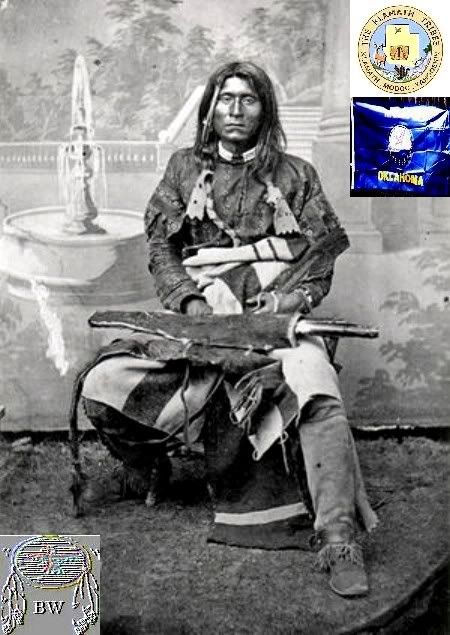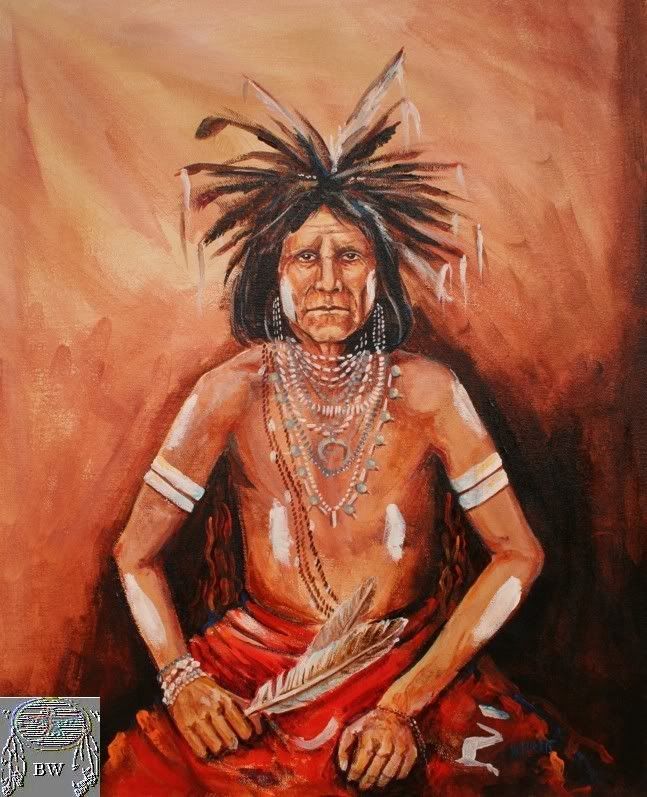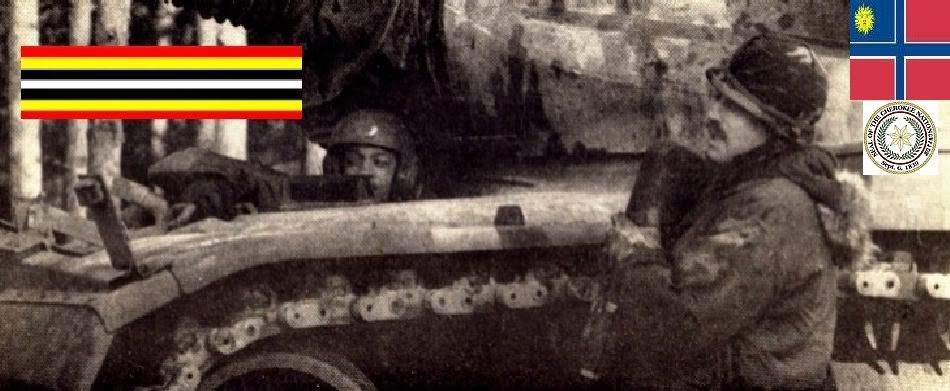|

Chief Kintpuash
(1837-1873)
Warriors Citation
Kintpuash, called Captain Jack by Anglo colonists of California because he wore a uniform coat with brass buttons that was
given to him by the army, played a major role as a leader in the Modoc War of 1872-1873. He was born at the Wa'chamshwash
Village on the Lower Lost River near the California-Oregon border. Kintpuash's father was ambushed and slain by treacherous
whites in the Ben Wright massacre of 1846. There is little knowledge of Kintpuash's life until he was twenty-five. We do know
that his Modoc name, Kintpuash, meant "He Has Water Brash". The Modocs had little to do with the Anglos until the advent of
the California gold rush. Although the Modocs opposed white expansion into their lands, Captain Jack counseled peace and encouraged
trade with the settlers living near Eureka, California, in the 1840s. However, the gold rush accelerated tensions and hostilities
in the 1850's until Schonchin Jim, a Modoc Chief, signed a treaty removing his band to a reservation in Oregon in 1864. Unfortunately,
the area was also the traditional homeland of the Klamaths, who did not relish Modoc resettlement in Oregon. Realizing that
the land in Oregon was insufficient, Captain Jack and his followers went back to California and requested a reservation there.
Federal and state authorities denied their request. Subsequently, Anglo settlers began to insist on the removal of the Modocs
in California. On November 28, 1872, federal forces invaded Captain Jack's camp and coerced him into consenting to removal.
As tensions mounted at the meeting, violence broke out. Scarfaced Charley, a Modoc leader angered by the army's behavior,
refused to give up his gun, and shots were fired in the ensuing struggle. When the fighting stopped, eight soldiers and fifteen
Modocs were dead. Fearing reprisals, the Modocs under Captain Jack fled to nearby Lava Beds of northern California, thinking
they would be safe there. However, this was not to be the case. Hooker Jim, another Modoc leader, and his people, encamped
on the Oregon side of the Lost River, were under attack by white settlers at the same time. In their own retreat to the lava
beds, they killed twelve whites in revenge. In this hostile environment, Modoc leaders Captain Jack, Schonchin John, and Hooker
Jim prepared to defend themselfes against an attack in the vast and inaccessible volcanic area. Captain Jack still counseled
peace and negotiation, arguing that the government would ultimately win. However, more militant factions under Hooker Jim
and Schonchin John outvoted him. On January 13, 1873, U.S. Army troops moved into the lava beds to quell the Modoc uprising.
On February 28, 1873 Capatin Jack's cousin Winema - a Modoc woman married to a white man, Frank Riddle - and a peace delegation
began talks with the rebellious Modocs. Hooker Jim and Schonchin John believed Captain Jack to be a coward for consenting
to the talks, so they insisted that Captain Jack kill General Edward S. Canby, the head of the delegation, believing that
American resolve would be demaged by Canby's death.

Reluctantly, Captain Jack agreed to their terms, but only if the Modocs were refused amnesty and a return to their California
homeland in the talks. At an April 11 meeting Captain Jack at least shot Canby. In the ensuing melee, Reverend Eleazar Thomas
was killed, and Albert Meachum, the Indian superintendent, was also severely wounded. Winema and her husband managed to escape
with the remaining members of the peace party. The government quickly fielded more troops and heavier weapons. The rugged
lava rock terrain worked to the Modocs' advantage at first, but dissension among the Modoc leaders and harsh conditions weakened
their position. Finally, when the the Modocs quarreled among themselves and left the Lava Beds, the government secured their
capture. Captain Jack surrendered in late May 1873. After a military trial in which Hooker Jim testified for the prosecution,
Captain Jack, Schonchin John, and two other Modoc warriors were hanged in October 3, 1873. Since the administartion of President
Ulysses S. Grant had instituted a peace policy toward Indians, the American people were stunned by the uprising and the consequent
inhumanity and insensitivity. In the final analysis, white prejudice, Indian betrayal, greed, and an opportunistic press made
a deplorable situation far worse. Employing over one thousand soldiers to fight a Modoc force that never numbered over fifty-three,
the army incurred losses that totaled the dead at seven officers, thirty-nine soldiers, two scouts, and sixteen civilians.
The Modoc dead numbered eleven woman and seven men. The enormous human and fiscal cost in capturing and removing 155 Modocs
to Indian Territory seemed ridiculous. This bloody affair produced no glory for the army or the Modocs. A few did manage to
profit from the war : a staged melodrama entitled 'Captain Jack' ran for a brief time in 1873. In a more grisly venture, grave
robbers dug up Captain Jack's body one day after his executiuon, embalmed it, and put it on display in a carnival sideshow
that toured profitably in many eastern cities. In 1909, fifty-one of the Oklahoma Modocs were permitted to return to their
reservation in Oregon. From: historical accounts & records


LINK TO BRAVEHORSE WARRIORS VOLUME TWO
|

